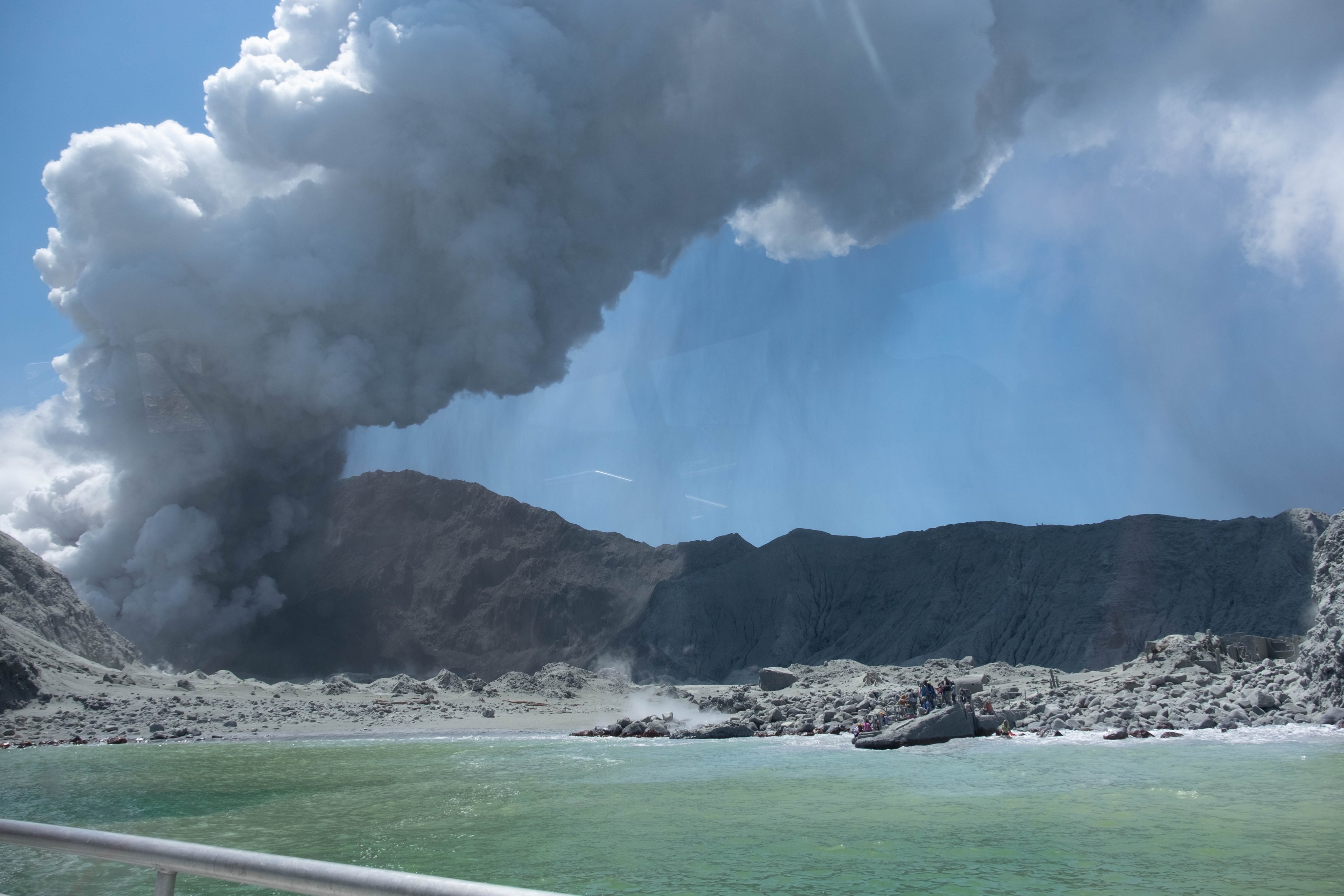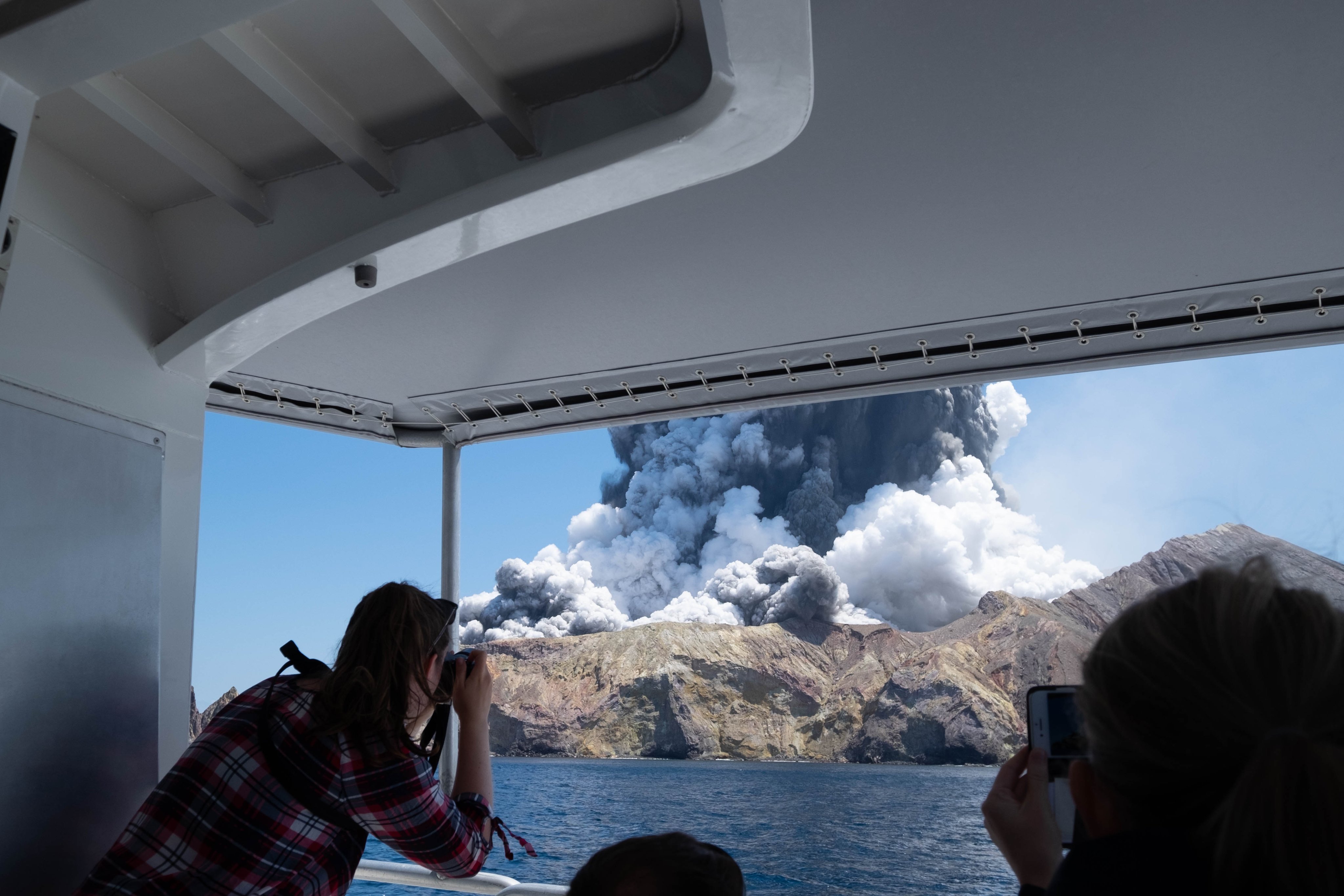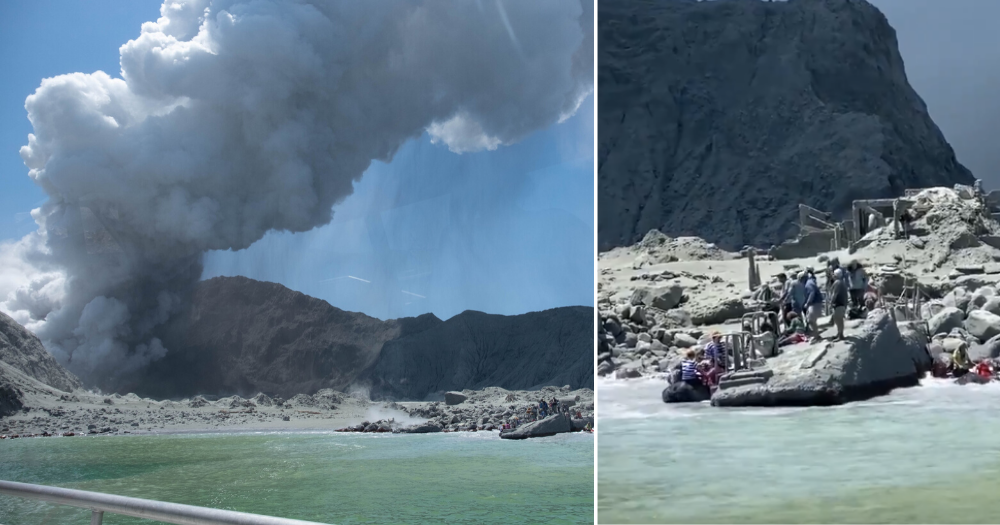A sudden volcano eruption on a popular tourist destination in New Zealand has left several dead, more missing, and families mourning.
White Island, New Zealand's most active volcano, erupted on Dec. 9, 2019 at around 2:11pm local time.
The unprecedented eruption resulted in a plume of ash spewing 3.6km into the sky.
Medics declared no survivors left on island
Photos and videos posted to Twitter by one Michael Schade showed towering columns of ash obscuring the sky and spilling into the sea.
Schade had apparently gotten onto a departing boat only 20 minutes before the eruption.
My god, White Island volcano in New Zealand erupted today for first time since 2001. My family and I had gotten off it 20 minutes before, were waiting at our boat about to leave when we saw it. Boat ride home tending to people our boat rescued was indescribable. #whiteisland pic.twitter.com/QJwWi12Tvt
— Michael Schade (@sch) December 9, 2019
 Photo from @sch / Twitter
Photo from @sch / Twitter
 Photo from @sch / Twitter
Photo from @sch / Twitter
According to The Guardian, as many as 50 people, hailing from countries like New Zealand, Australia, Germany, China, Malaysia, the U.S. and the UK, were thought to have been on the island during the eruption, according to police.
Since then, six people have been confirmed dead, and eight more missing.
One of the deceased is a Malaysian, as announced in a Facebook post by the Malaysian High Commission in Wellington.
In a new update, two medical clinicians who were sent to scout the island declared that there was no one left to be rescued, reported NZ Herald.The pair, a paramedic and a medical director of St. John's, were prepared to extract any survivors, and "spent some time in a safe area" and "tried to do an assessment and see if they could find anybody else".
However, by the end of the reconnaissance trip, it reportedly became clear that "everybody that could come off was already off the island".
Reconnaissance flights conducted on Dec. 10 morning also reportedly saw no survivors, reported BBC.
People ran into sea to escape eruption
A total of 34 people have been rescued from the island so far.
Schade's videos showed tourists piling up atop a jutting rock near the edge of the island in order to reach a rescue boat or dinghy in the choppy waters.
— Michael Schade (@sch) December 9, 2019
New Zealander Geoff Hopkins said that his tour group had been about to leave the island at the time of the eruption, and had helped pull injured survivors onto the boat, reported CNA.
Hopkins stated that visitors had allegedly attempted to run into the sea to escape the eruption.
Many sported "massive" burn injuries on their exposed limbs, especially those clad in only t-shirts and shorts.
Thus far, around 30 people have been hospitalised, many with critical injuries and burns on more than 30 percent of their bodies.
Three have been hospitalised and released.
Biggest disaster since 1914
Despite the list of casualties, the eruption has been labelled by New Zealand geoscience agency GNS Science as "short-lived", almost like a "throat-clearing kind of eruption".
White Island has seen continuous volcanic activity since 150,000 years ago, and is known for being unpredictable and producing sudden explosive eruptions at any time, volcanologist Shane Cronin wrote in The Conversation.
In the case of White Island, the magma is shallow, and the balance between super-heated water trapped in the rock's pores and external factors is delicate.
Any changes such as an earthquake or even a change in the lake's water level could tip this balance, and result in a steam-driven eruption (called a hydrothermal or phreatic eruption), which can occur with little to no warning.
Such steam-driven eruptions also make it difficult for scientists to track and monitor, as opposed to eruptions caused by magma.
White Island previously erupted in 2000 and 2016.
Although previous eruptions had sent ash spewing 10km into the sky, the event on Dec. 9 has been classified as the biggest disaster since 1914, another NZ Herald article reported.
Warnings by scientists allegedly ignored
Despite the popularity of White Island as a tourist destination, sold as a adventure for tourists keen to get up close and personal with an active volcano, academics have allegedly long warned of the area's potential unrest.
Ray Cas, a Professor from Monash University's School of Earth, Atmosphere and Environment, said that the island had been a "disaster waiting to happen for many years".
Cas commented that he always felt it was too dangerous to allow tour groups to visit the island.
Mere weeks before the event occurred, GeoNet had apparently issued bulletins warning of increased volcanic activity, and that the "volcano may be entering a period where eruptive activity is more likely than normal".
GeoNet volcanologist Brad Scott told The New York Times that the agency had reportedly passed on the information to tour operators and the police.
However, tourists are still able to make their own decisions on whether or not to visit the island.
Additionally, another Geosciences professor, David Rothery, stated that White Island is privately owned, and "the state has no control over access".
Nevertheless, the volcano has displayed unrest in the past without eruptions occurring.
Investigation launched into deaths
New Zealand police announced that they will be launching an investigation into the deaths of those as a result of the eruption.
The incident has sparked questions on whether tour groups should have allowed visitors onto the island, considering the threat level of the volcano had been raised a week before.
Top photo from Michael Schade @sch / Twitter
If you like what you read, follow us on Facebook, Instagram, Twitter and Telegram to get the latest updates.
